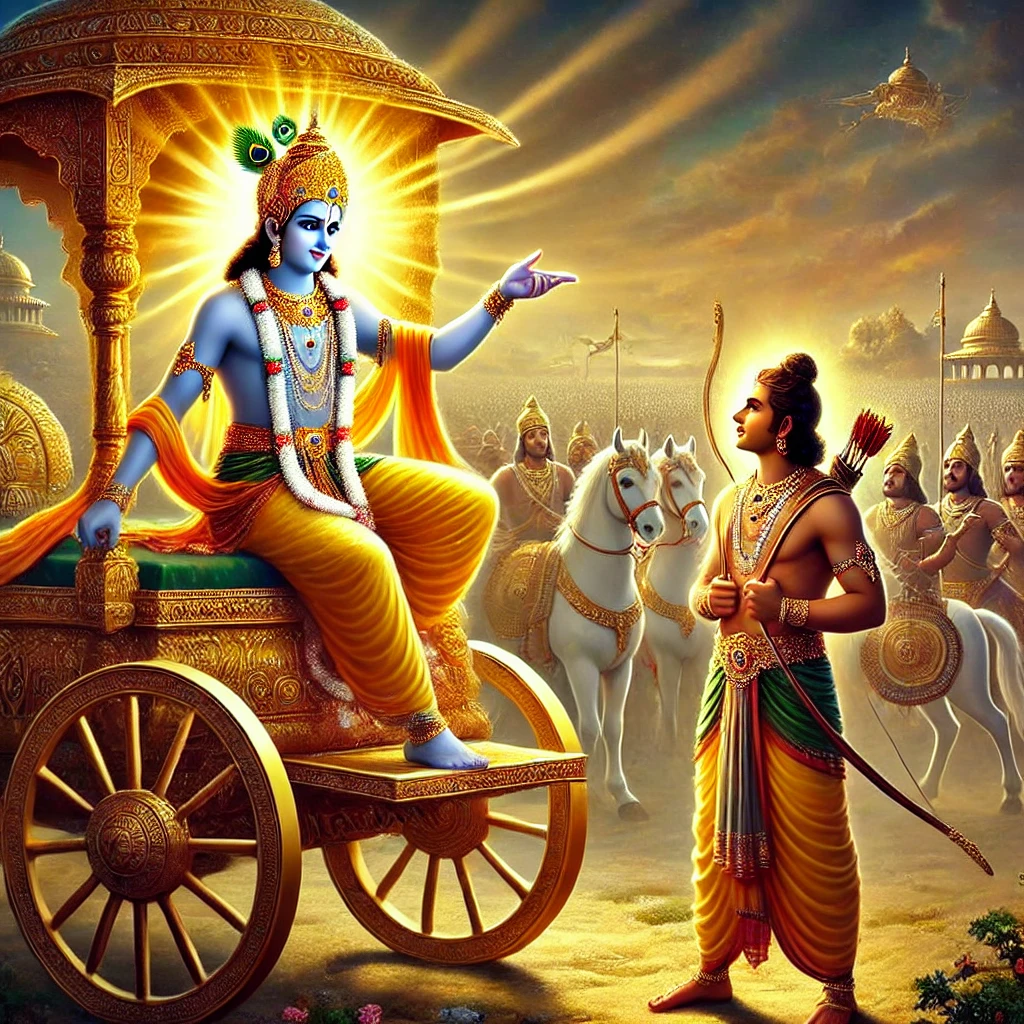The second chapter of the Bhagavad Gita is one of the most profound and foundational sections of the text. It serves as a turning point where Krishna begins imparting divine wisdom to Arjuna, who is paralyzed by doubt and grief on the battlefield of Kurukshetra. This chapter, often referred to as Sankhya Yoga (The Yoga of Knowledge), lays the philosophical groundwork for the rest of the Gita.
Key Themes of Chapter 2
1. The Nature of the Soul (Atman)
Krishna starts by reminding Arjuna of the eternal nature of the soul. He explains that the soul (Atman) is imperishable, unborn, and unchanging. It neither dies nor can it be destroyed by any means. The body is temporary, but the soul is eternal:
“For the soul, there is neither birth nor death. It has never been brought into being, nor will it be. It is unborn, eternal, ever-existing, and primeval. It is not slain when the body is slain.” (2.20)
This teaching aims to free Arjuna from the fear of death, reinforcing that he is not merely a body but an immortal soul.
2. Duty and Righteous Action (Karma Yoga)
Krishna emphasizes the importance of duty (dharma), especially for a warrior (Kshatriya). He tells Arjuna that as a warrior, his duty is to fight for justice and righteousness without attachment to the outcome:
“Considering your own duty as a Kshatriya, you should not waver. For a Kshatriya, there is nothing more honorable than a righteous war.” (2.31)
This teaching introduces the concept of Karma Yoga—acting selflessly without being attached to success or failure.
3. Equanimity in Success and Failure
Krishna urges Arjuna to develop a balanced mind, treating victory and defeat, gain and loss, pleasure and pain with equanimity (samattvam). He advises Arjuna to perform his duty with a steady mind, unaffected by emotions:
“Be steadfast in yoga, O Arjuna. Perform your duty and abandon all attachment to success or failure. Such evenness of mind is called Yoga.” (2.48)
This philosophy forms the essence of Karma Yoga—acting with dedication but without selfish expectations.
4. The Qualities of the Wise (Sthitaprajna)
Krishna describes a person of steady wisdom (Sthitaprajna)—one who is free from desires, unaffected by pleasure and pain, and anchored in divine consciousness. Such a person remains calm in all situations:
“A person who is not disturbed by happiness and distress, and is steady in both, is certainly eligible for liberation.” (2.15)
Krishna advises detachment from material desires and senses, advocating a life of self-control and inner peace.
Lessons from Chapter 2 for Modern Life
- Overcome Fear and Doubt: Just as Arjuna faced doubts on the battlefield, we encounter dilemmas in life. Understanding that our true self is beyond temporary situations helps in making fearless decisions.
- Focus on Actions, Not Results: We often stress over outcomes, but Krishna teaches us to focus on our effort and leave the results to a higher force.
- Maintain Inner Balance: In life’s ups and downs, staying calm and composed (Sthitaprajna) helps us navigate challenges wisely.
- Perform Your Duty Righteously: Whether in work, relationships, or responsibilities, doing our best with sincerity, without selfish attachment, leads to fulfillment.
Conclusion
The second chapter of the Bhagavad Gita serves as the foundation for Krishna’s teachings. It combines spiritual wisdom, ethical principles, and practical guidance for living a balanced life. By embracing the principles of Karma Yoga, selfless action, and inner stability, one can lead a life of purpose, peace, and fulfillment.
Would you like to explore any specific verse or theme in detail?

Leave a Reply